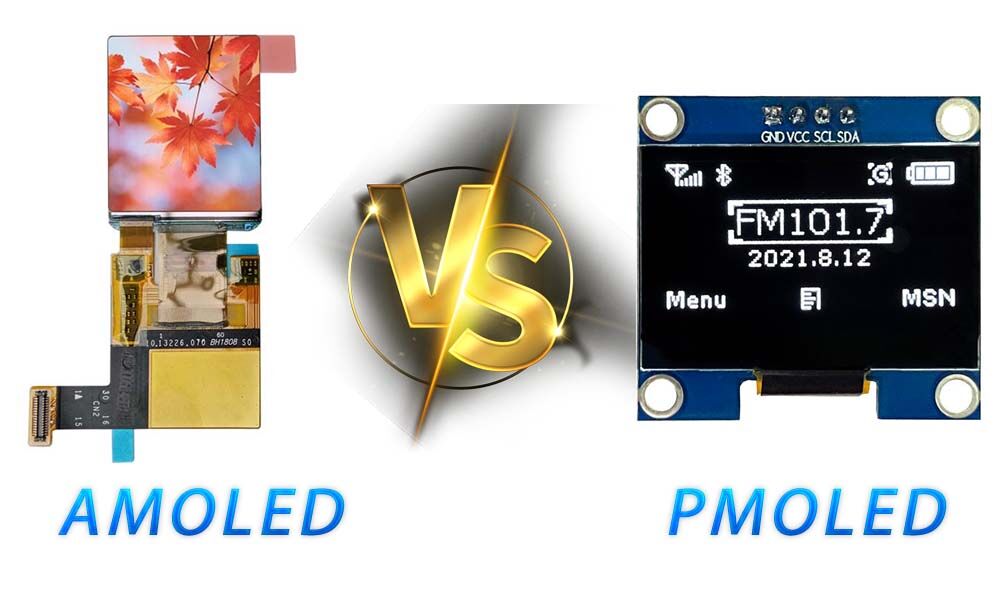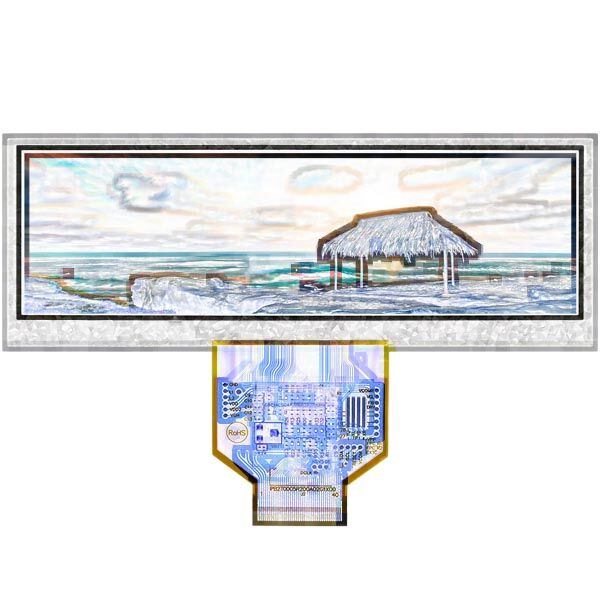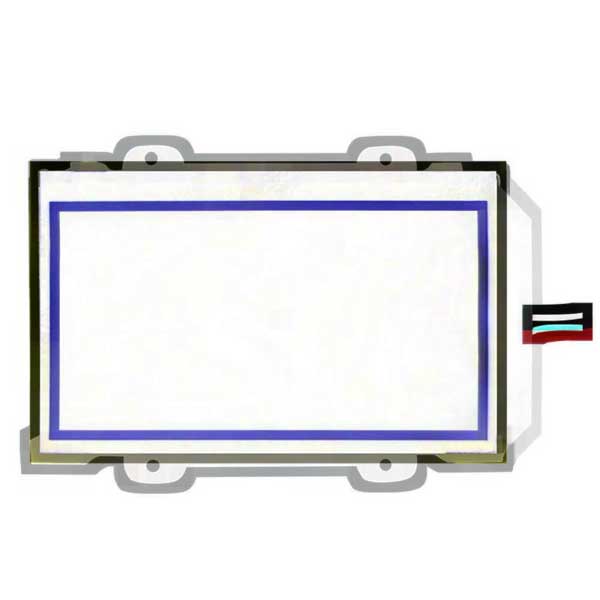1. Two technical branches of OLED: PMOLED and AMOLED
OLED display is characterized by self-illumination, high contrast, low power consumption, lightweight, thin thickness, etc. It is called the next-generation display technology. According to the drive mode, OLED can be divided into active drive (AMOLED) and passive drive (PMOLED).
Each pixel of AMOLED is equipped with TFT (thin film transistor) with a switch. Its driving mode is easier to achieve high brightness, high resolution, high color performance, and low energy consumption. It is widely used in consumer electronic products. PMOLED has a simple structure and an easy manufacturing process. It can effectively reduce manufacturing costs and has an extremely fast response speed. It has excellent development potential in displaying simple microdevices. Still, it will have problems of large power consumption and reduced serving time, and the product size is limited to about 5 inches.
2. The connection, difference, advantages, and disadvantages of PMOLED and AMOLED
PMOLED and AMOLED belong to OLED, and the driving mode is the difference. PMOLED is also called passive matrix organic electroluminescent diode, and the luminous principle of PMOLED and monochrome LCD is similar. While AMOLED is also called active organic electroluminescent diode, it is just like colored LCD.
PMOLED is a simple form of a matrix of cathodes and anodes and illuminates the pixels in the array by scanning. Each pixel is operated in a short pulse mode to emit light for instant high brightness. The advantage is simple structure, which can effectively reduce manufacturing costs. However, the high drive voltage makes it unsuitable for large-size and high-resolution panels, which is different from the trend of current development.
AMOLED uses independent thin film transistors to control each pixel, and each pixel can continuously and independently drive light. It can be driven by low-temperature polysilicon or oxide TFT. The advantages are low driving voltage and long serving time of light emitting elements. And the disadvantages are the cost is too high, and the production process is more complex, which is more difficult to control in terms of price.
PMOLED is unsuitable for displaying dynamic images because the reaction speed is relatively slow but very energy-saving. AMOLED is characterized by fast reaction speed and can be used for large-size TV panels, but its disadvantage is high power consumption.
3. The connection and difference between AMOLED and OLED
Although LED displays are common daily, each LED is tiny and divided into three subpixel groups of red, green, and blue, then forms different colors. The arrangement of subpixels will also affect the overall display effect. The O in AMOLED represents organic. To put it simply, a series of organic thin film materials are used between the positive and negative electrodes to achieve the purpose of luminescence. AM stands for Active Matrix. Compared with Passive Matrix, it presents a higher level of the driving mode of each OLED pixel.
The control of PMOLED’s pixel is realized through a complex electrode network to recognize the charging and discharging of a pixel. In general, the control mode of PMOLED is relatively slower, and the control accuracy is slightly lower. On the other hand, AMOLED adds TFT and a capacitor layer to each LED. When a row or a column is powered on to activate the intersecting pixel, the capacitor layer in the pixel can maintain the charging state between two refreshes, thus achieving faster and more accurate pixel emission control.
OLED is also known as an electromechanical laser display and organic light-emitting semiconductor. It is a different type of light-emitting principle from liquid crystal display. The main advantage of OLED display is the high controllability of pixels. Each pixel can be switched independently to achieve purer black and a higher contrast ratio. In addition, power consumption can also be reduced by turning off unnecessary pixels when the display is turned on. Since there are fewer layers inside OLED, the light transmittance is better, which is conducive to higher brightness and a wider viewing angle.
OLED display can be thin, which is very suitable for mobile devices. Due to the lack of a hard backlight layer and the flexible plastic substrates, OLED also has excellent advantages in flexibility, creating more possibilities for future mobile devices and even wearable devices.
AMOLED belongs to OLED. In short, OLED technology includes PMOLED and AMOLED. PMOLED cannot be made in large sizes; however, AMOLED can be very big. PMOLED mainly existed in the early time of dual-screen mobile phones used for small external screens. At present, mobile devices and TVs all adopt AMOLED technology.
AMOLED is an active organic light-emitting diode. It not only needs to add signals to work but also needs to supply additional power to make the diode reach the working state. It will turn on only when a light signal is given. To take an inappropriate example, it works like a television. You can’t watch it if you only supply power or connect it with a wired signal. You can only watch it when you supply power and connect it with a wired signal at the same time.
In terms of structure, OLED is basically a diode, while AMOLED is a triode or multiple triodes driving a luminous point.
4. The connection and difference between PMOLED and OLED
PMOLED stands for Passive Matrix OLED. A PMOLED display is a simple control solution where you control each row in the display in turn. The pixels in each row are often turned off and use higher voltage to make them brighter since there are no storage capacitors for PMOLED.
The advantages of PMOLED are simple manufacturing processes and simple structure, while the disadvantages are difficulty in making large sizes. In order to maintain the brightness of the whole panel, it is necessary to increase the brightness of each pixel to increase the operating current, which will reduce the serving time of the OLED device, and it isn’t easy to control the Current Drive.
5. Difficulties faced by AMOLED on the road of popularization
If compared with PMOLED, due to its more obvious advantages, AMOLED has become a mainstream OLED technology with stronger practicability and faster popularization. It inherits the characteristics of OLED materials, such as energy saving, ultra-thin, and flexibility, but it is not mature at the moment.
The problems in the industrialization of AMOLED include three aspects: the short serving time of blue OLED light-emitting materials have not been solved for a long time, which affects the overall life of the display screen, there are also many problems in the display color, and the high cost of production is also the great challenge at the moment.
Users roast AMOLED because the color restoration is not as good as IPS display, the graphic color presented on the screen is too thick, too full, and the color is entirely vulgar. Nevertheless, people are still optimistic about this technology. AMOLED is known as the most popular display technology of the next generation.






